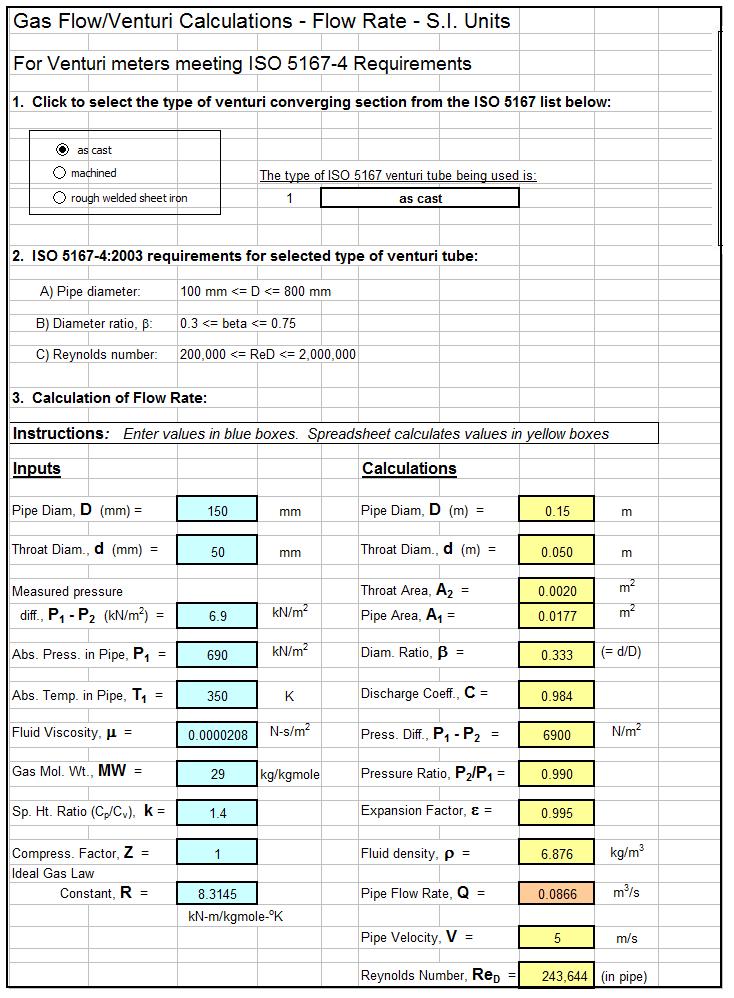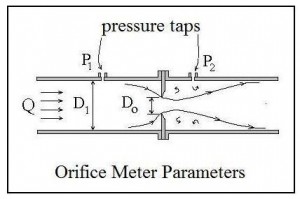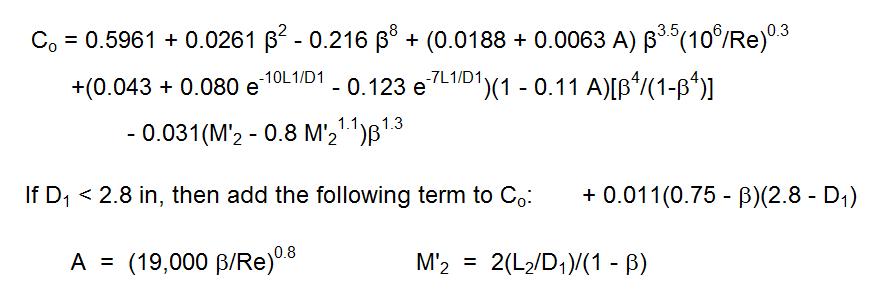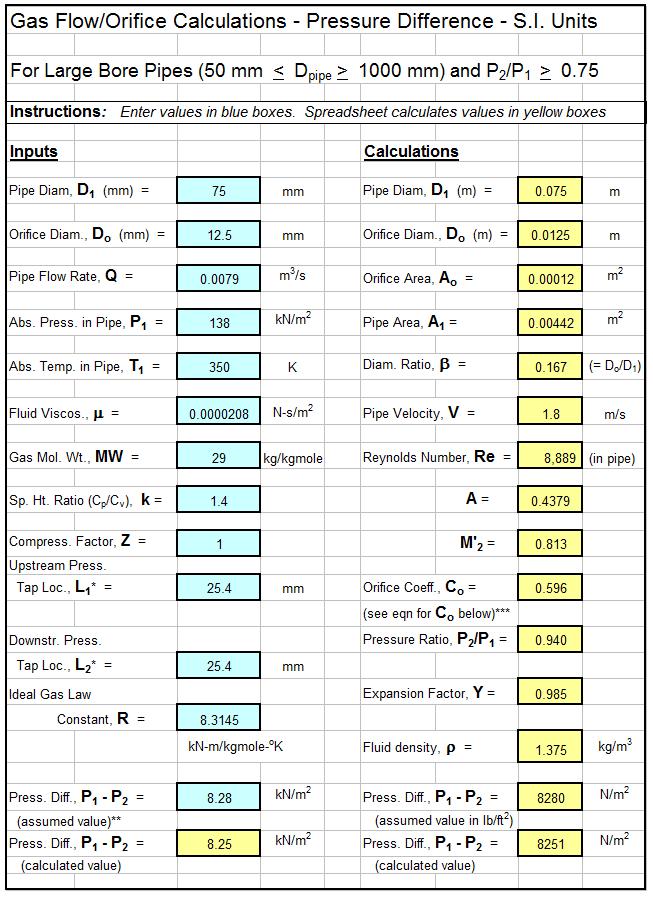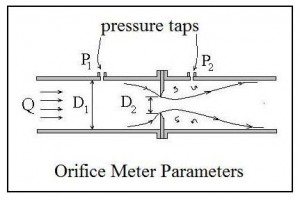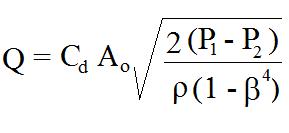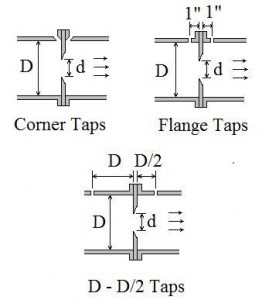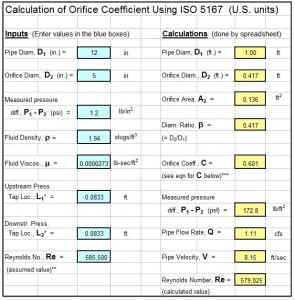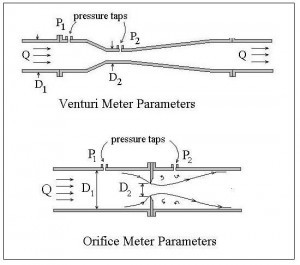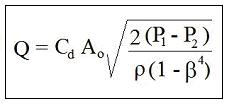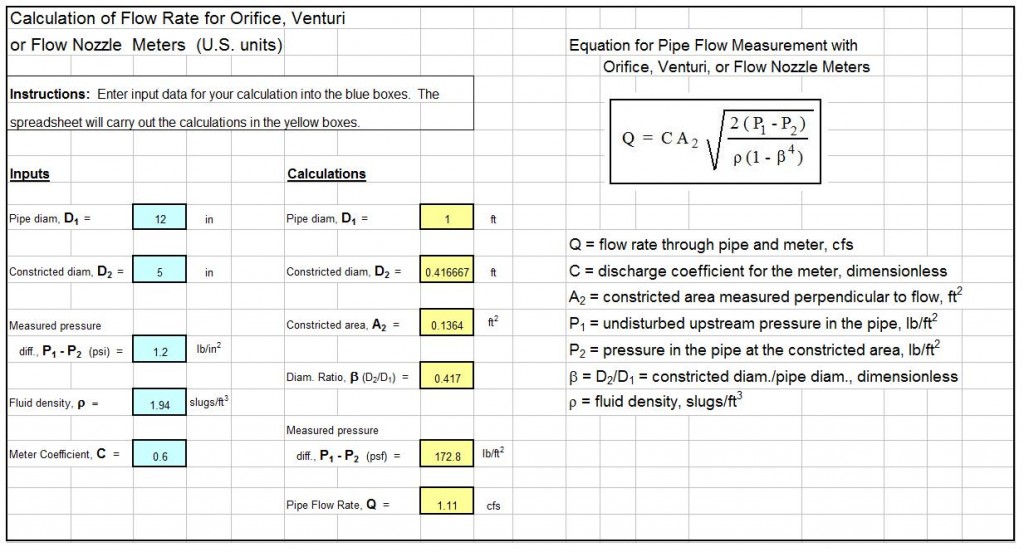Where to Find ISO 5167 Venturi Meter Spreadsheets
For Excel spreadsheets to make ISO 5167 venturi meter calculations, click here to visit our spreadsheet store. Obtain convenient, easy to use spreadsheets for ISO 5167 venturi meter calculations at reasonable prices. Read on for information about the use of Excel spreadsheets for venturi meter calculations.
How a Venturi Meter Works
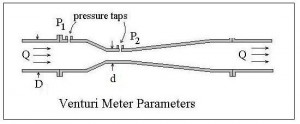 Venturi meters function by sending pipe flow through a constricted area (the venturi throat), as shown in the diagram at the right. Due to the increased fluid velocity passing through the constriction, there will be a decreased pressure at that location. The pipe flow rate can then be calculated from the measured pressure difference between the undisturbed pipe flow and the flow through the constriction.
Venturi meters function by sending pipe flow through a constricted area (the venturi throat), as shown in the diagram at the right. Due to the increased fluid velocity passing through the constriction, there will be a decreased pressure at that location. The pipe flow rate can then be calculated from the measured pressure difference between the undisturbed pipe flow and the flow through the constriction.
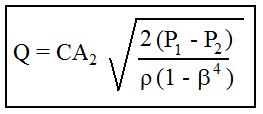 A general equation for calculating flow rate through a venturi meter is shown at the left. The parameters in the equation and their units are as shown below:
A general equation for calculating flow rate through a venturi meter is shown at the left. The parameters in the equation and their units are as shown below:
- Q is the flow rate through the pipe and through the meter (cfs – U.S. or m3/s – S.I.)
- C is the discharge coefficient, which is dimensionless
- A2 is the constricted area perpendicular to flow (calculated from the venturi throat diameter) (ft2 – U.S. or m2 – S.I.)
- P1 is the undisturbed upstream pressure in the pipe (lb/ft2 – U.S. or N/m2 – S.I.)
- P2 is the pressure in the pipe at the constricted area, Ao (lb/ft2 – U.S. or N/m2 – S.I.)
- β = d/D = (diam. at A2/pipe diam.), which is dimensionless
- ρ is the fluid density (slugs/ft3 – U.S. or kg/m3 – S.I.)
ISO 5167 Venturi Meter Guidelines
ISO 5167-4: 2003 provides discharge coefficient values for three venturi meter variations, subject to the venturi meeting a set of specifications and guidelines given in the publication. The three venturi meter variations are i) “as cast” convergent section, ii) “machined” convergent section, and iii) “rough welded sheet iron” convergent section. For each of these three variations, ISO 5167-4:2003 specifies a range for pipe diameter, diameter ratio (d/D), and Reynolds number in the pipe.
A Spreadsheet Screenshot for ISO 5167 Venturi Meter Calculations
The image below shows part of an Excel spreadsheet that can be used for ISO 5167 venturi meter calculations, such as flow rate calculation, discharge coefficient, pressure difference, or venturi throat diameter. For this spreadsheet and other low cost, easy to use spreadsheets for gas flow or liquid flow ISO 5167 venturi meter calculations in S.I. or U.S. units, click here to visit our spreadsheet store.
References
1. Munson, B. R., Young, D. F., & Okiishi, T. H., Fundamentals of Fluid Mechanics, 4th Ed., New York: John Wiley and Sons, Inc, 2002.
2. U.S. Dept. of the Interior, Bureau of Reclamation, 2001 revised, 1997 third edition, Water Measurement Manual, available for on-line use or download at: http://www.usbr.gov/pmts/hydraulics_lab/pubs/wmm/index.htm
3. International Organization of Standards -Measurement of fluid flow by means of pressure differential devices inserted in circular cross-section conduits running full. Part 4, Reference number: ISO 5167-4:2003
4. Bengtson, Harlan H., “Orifice or Venturi Pipe Flow Meters: for Liquid Flow or Gas Flow,” an Amazon Kindle ebook.
5. Bengtson, Harlan H., “Flow Measurement in Pipes and Ducts,” an online, self-study, continuing education course for Professional Engineers at www.CEDengineering.com.
6. Bengtson, Harlan H., “Orifice and Venturi Meters Pipe Flow Meters – for Liquid and Gas Flow,” an online, self-study, continuing education course for Professional Engineers at www.suncam.com.

